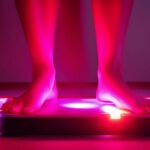Neuropathy is a condition that affects millions of people worldwide. It can cause pain, numbness, and weakness in the hands and feet, and it can be challenging to manage. Light therapy is a non-invasive treatment that uses specific wavelengths of light to promote healing and reduce pain. But does it work for neuropathy? In this article, we will explore the science behind light therapy and its potential benefits for those with neuropathy.
In recent years, light therapy has gained attention as a potential treatment option for neuropathy. Neuropathy is a condition characterized by damage to the nerves in the body, resulting in numbness, tingling, and pain. This introduction will explore the question: does light therapy work for neuropathy? We will examine the research behind light therapy for neuropathy, and whether it has been shown to be an effective treatment option.
Contents
What is Neuropathy?
Neuropathy is a condition that affects the nerves in the peripheral nervous system. It can be caused by a variety of factors, including diabetes, chemotherapy, and alcoholism. The symptoms of neuropathy can vary, but they often include numbness, tingling, and pain in the hands and feet. Neuropathy can be challenging to manage, and traditional treatments such as pain medications and physical therapy may not be effective for everyone.
The Importance of Neuropathy Awareness
Neuropathy is a condition that affects millions of people worldwide, yet it is often misunderstood and under-diagnosed. Raising awareness about neuropathy can help more people get the help they need. It’s essential to understand the symptoms of neuropathy and the potential treatments available.
What is Light Therapy?
Light therapy is a non-invasive treatment that uses specific wavelengths of light to promote healing and reduce pain. It has been used for decades to treat a variety of conditions, including depression, skin disorders, and seasonal affective disorder. The light used in light therapy is typically bright and full-spectrum, mimicking natural sunlight.
How Does Light Therapy Work?
Light therapy works by stimulating the body’s natural healing processes. When the light penetrates the skin, it interacts with the body’s cells, promoting the production of ATP, which is essential for cellular energy. This increased cellular energy can help repair damaged tissues and reduce inflammation, which can lead to pain relief.
The Science Behind Light Therapy for Neuropathy
Several studies have explored the potential benefits of light therapy for neuropathy. One study published in the Journal of Diabetes Science and Technology found that light therapy was effective at reducing pain and improving nerve function in people with diabetic neuropathy. Another study published in the Journal of Clinical and Aesthetic Dermatology found that light therapy was effective at reducing pain and inflammation in people with peripheral neuropathy.
Key takeaway: Light therapy is a non-invasive treatment that uses specific wavelengths of light to promote healing and reduce pain. It has been shown to be effective in reducing pain and inflammation, improving nerve function, and promoting better sleep for those with neuropathy. As more research is conducted, it’s possible that light therapy will become a more widely accepted treatment for neuropathy.







